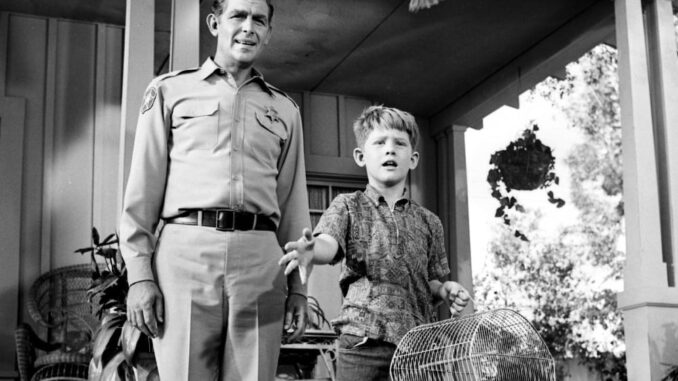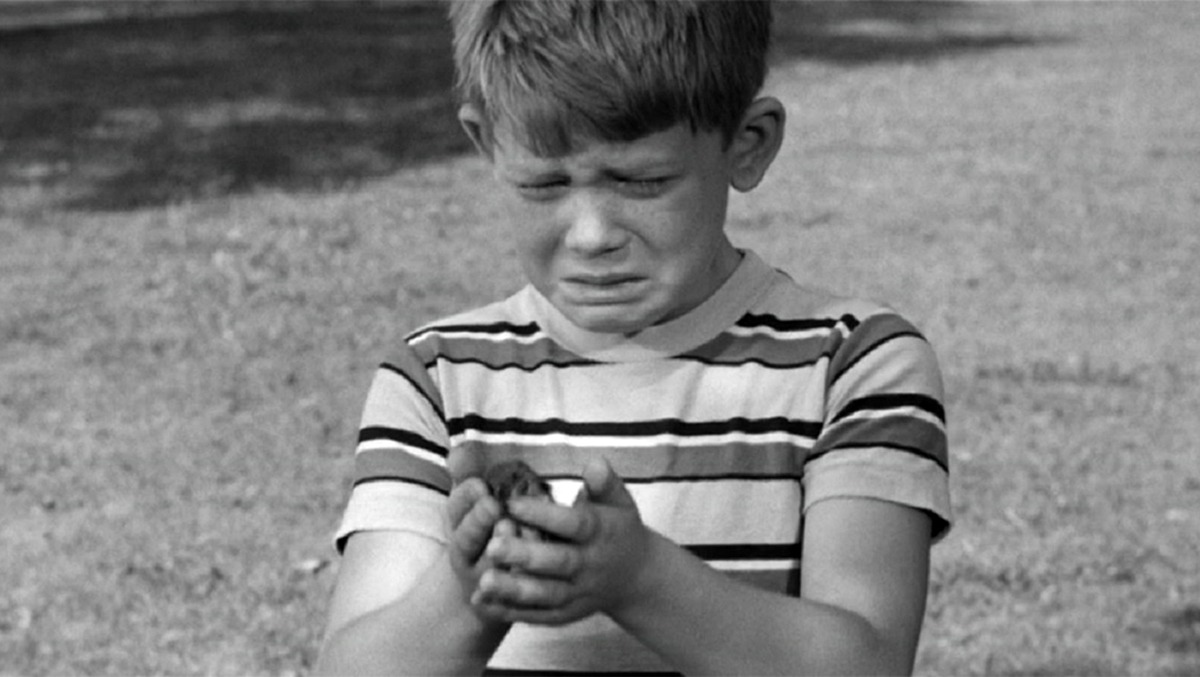
Introduction: A Quiet Episode That Soared into Classic TV History
“Opie the Birdman” is more than just the first episode of Season 4 of The Andy Griffith Show. It’s a moment of emotional honesty that caught viewers off guard in 1963—and continues to resonate today. While the series is typically known for its lighthearted charm, this episode took a sharp but welcome turn into deeper territory, showing audiences that Mayberry was just as capable of teaching heartfelt lessons as it was of delivering laughs.
So, what made this simple tale about a boy, a slingshot, and a bird’s nest such an unforgettable piece of television? Let’s dive in.
“Opie the Birdman” — A Quick Episode Overview
In the Season 4 premiere, Opie Taylor (played by a young Ron Howard) accidentally kills a mother bird with a slingshot. At first, he doesn’t realize the magnitude of what he’s done. But when he hears the baby birds chirping helplessly for their mother, guilt begins to eat away at him.
Sheriff Andy Taylor (Andy Griffith) doesn’t punish him. Instead, he gently guides Opie toward understanding the weight of his actions. The episode unfolds slowly, with Opie ultimately deciding to raise the baby birds himself until they’re ready to fly.
A Powerful Message Without Preaching
What’s remarkable is how the show delivers its message without turning into a lecture. There’s no finger-wagging or moralizing. Andy’s parenting approach is calm and understated, which makes the lesson all the more impactful. He doesn’t yell. He doesn’t shame. He just quietly reminds Opie, “You’re not being punished. You’re doing the right thing.”
This kind of storytelling is what made The Andy Griffith Show timeless.
The Role of the Slingshot — A Symbol of Innocence Lost
The slingshot is more than a toy here—it’s a symbol of childhood ignorance and the sometimes painful transition into understanding. Opie doesn’t mean to do harm, but like many kids, he acts before thinking.
Once the consequences are clear, the slingshot becomes a relic of a lesson learned. That transformation is subtle but brilliantly woven into the plot.
Ron Howard’s Breakthrough Performance as Opie
This was one of Ron Howard’s most emotionally demanding scenes as a child actor. He goes from mischievous and playful to deeply remorseful and nurturing in the span of one episode.
The scene where Opie stands outside the birdhouse, watching the baby birds fly away, is one of the most quietly moving moments in TV history. Ron Howard handles it with the kind of nuance that makes it easy to forget he was only nine years old at the time.
Andy Griffith’s Understated Genius as a Father Figure
Andy Taylor’s parenting style is the gold standard in this episode. He doesn’t explode in anger. He doesn’t shame his son. Instead, he uses silence, empathy, and quiet reasoning to guide Opie toward growth.
It’s parenting without punishment. Teaching without preaching. Discipline through understanding.

The Episode’s Lasting Cultural Impact
“Opie the Birdman” is consistently ranked as one of the most memorable and important episodes of the entire series. It’s been praised by critics, parents, educators, and even psychologists for how it handles themes of guilt, responsibility, and redemption.
In a television landscape full of canned laughter and sitcom tropes, this episode stands out for its bravery in exploring raw human emotion.
Why This Episode Still Resonates Today
In a world of fast-paced digital content and shallow entertainment, “Opie the Birdman” feels like a breath of fresh air. Its themes—compassion, accountability, and empathy—are more relevant than ever.
The story reminds us that actions have consequences, but those consequences don’t have to define us. We can change. We can do better. We can grow.
Filming Challenges and Behind-the-Scenes Insights
According to cast and crew interviews, this episode wasn’t an easy one to film. Ron Howard reportedly needed extra coaching to cry on cue, and the scene with the baby birds had to be filmed multiple times to ensure authenticity.
Yet the final product came together beautifully, and it remains a standout even among a show known for its strong episodes.
The Role of Animals in Teaching Empathy
There’s something primal about the sound of baby birds crying for their mother. It cuts through the noise and hits the emotional core. The show’s creators understood this, and they used it to full effect.
By making the birds’ suffering central to the episode, the writers crafted a powerful, universal symbol of helplessness—and in turn, responsibility.
The Writing Team’s Bold Decision to Go Deep
Season 4 opened with a heavy story. That wasn’t by accident. Writers wanted to show that The Andy Griffith Show could do more than make audiences chuckle. It could move them.
By placing such an emotionally complex story at the season’s front, the show signaled that Mayberry wasn’t afraid to dive deeper.
How the Audience Reacted in 1963
Back in 1963, this episode struck a nerve. Letters poured in praising the emotional depth of the story. Parents loved the gentle moral. Children remembered it vividly.
It proved that classic TV could be both entertaining and enlightening—a rare combination even by today’s standards.
From Mayberry to the Classroom
Educators have used this episode for decades to teach ethics and responsibility to young students. Whether in elementary school lessons or parenting workshops, “Opie the Birdman” is cited as a shining example of values-driven storytelling.
It’s proof that great TV can also be a great teaching tool.
What Modern Shows Can Learn from “Opie the Birdman”
Modern sitcoms often lean into cynicism or slapstick. There’s little room for earnestness. That’s what makes this episode feel so radical today. It’s quiet. It’s tender. It trusts the audience to sit with discomfort and emotion.
Newer shows could take a page out of Mayberry’s playbook—less noise, more heart.
Ron Howard’s Reflection on the Episode
Ron Howard has mentioned in interviews that this was one of the most memorable episodes he ever filmed. He’s said it taught him the importance of emotional storytelling—something that would go on to influence his directing career.
In many ways, this was a foundational moment in the journey of a Hollywood legend.
The Ending Scene—A Metaphor for Growth
Watching those baby birds take flight is more than just the resolution to a plotline—it’s a metaphor for Opie himself. He’s grown. He’s learned. And he’s ready to face the world with a little more wisdom.
It’s the kind of ending that stays with you long after the credits roll.
Conclusion: Why “Opie the Birdman” Still Matters
“Opie the Birdman” isn’t just one of the best episodes of The Andy Griffith Show—it’s one of the finest examples of moral storytelling in television history. With its quiet strength, emotional weight, and deeply human message, it continues to inspire and educate decades after it first aired.
It reminds us all of the power of gentle parenting, the importance of taking responsibility, and the healing that comes with doing what’s right—even when it’s hard.
5 Unique FAQs About “Opie the Birdman”
Q1: Was the bird Opie killed real or a prop?
A1: The bird was a prop, but the baby birds used in later scenes were real, handled carefully by trainers on set.
Q2: Did Ron Howard have trouble acting out the emotional scenes?
A2: Yes, he reportedly struggled with the crying scenes and needed guidance from the director to deliver a convincing performance.
Q3: Why didn’t Andy punish Opie directly?
A3: The writers wanted to show a different kind of discipline—one based on teaching and understanding rather than fear or punishment.
Q4: Is this episode based on a real event or story?
A4: While not directly based on a true story, it reflects common childhood experiences and was inspired by universal lessons in responsibility.
Q5: What season and episode number is “Opie the Birdman”?
A5: It’s Season 4, Episode 1 of The Andy Griffith Show, originally aired on September 23, 1963.
